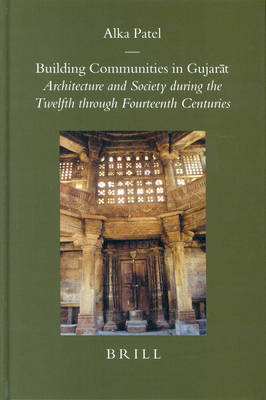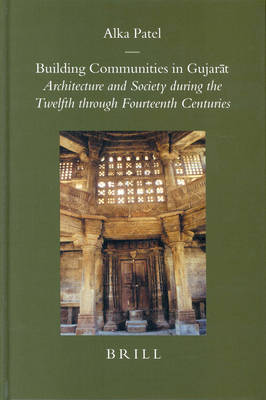
- Afhalen na 1 uur in een winkel met voorraad
- Gratis thuislevering in België vanaf € 30
- Ruim aanbod met 7 miljoen producten
- Afhalen na 1 uur in een winkel met voorraad
- Gratis thuislevering in België vanaf € 30
- Ruim aanbod met 7 miljoen producten
Zoeken
Building Communities in Gujarāt
Architecture and Society During the Twelfth Through Fourteenth Centuries
Alka Patel
€ 332,95
+ 665 punten
Omschrijving
The Indo-Islamic architecture subject of this book is not the result of a 'clash of civilizations', but to be seen as innovations of the local architectural tradition, a product of local craft traditions.
Alka Patel here brings together two architectural corpora in a careful analysis of the 12th- through 14th-century Islamic ritual buildings of southeastern Sindh, Gujarat and Rajasthan. The new social and ritual demands of Islam led local craftspeople to initiate rejuvenation and expansion of their skills and knowledge.
Moreover, the commonality of building practices among "religions" led to the intertwining of various Muslim and non-Muslim communities.
The work's analysis of epigraphical evidence will be seminal to reorientations of historical methods investigating interactions among socio-religious groups in the region.
Alka Patel here brings together two architectural corpora in a careful analysis of the 12th- through 14th-century Islamic ritual buildings of southeastern Sindh, Gujarat and Rajasthan. The new social and ritual demands of Islam led local craftspeople to initiate rejuvenation and expansion of their skills and knowledge.
Moreover, the commonality of building practices among "religions" led to the intertwining of various Muslim and non-Muslim communities.
The work's analysis of epigraphical evidence will be seminal to reorientations of historical methods investigating interactions among socio-religious groups in the region.
Specificaties
Betrokkenen
- Auteur(s):
- Uitgeverij:
Inhoud
- Aantal bladzijden:
- 308
- Taal:
- Engels
- Reeks:
- Reeksnummer:
- nr. 22
Eigenschappen
- Productcode (EAN):
- 9789004138902
- Verschijningsdatum:
- 28/05/2004
- Uitvoering:
- Hardcover
- Formaat:
- Genaaid
- Afmetingen:
- 166 mm x 244 mm
- Gewicht:
- 725 g

Alleen bij Standaard Boekhandel
+ 665 punten op je klantenkaart van Standaard Boekhandel
Beoordelingen
We publiceren alleen reviews die voldoen aan de voorwaarden voor reviews. Bekijk onze voorwaarden voor reviews.











